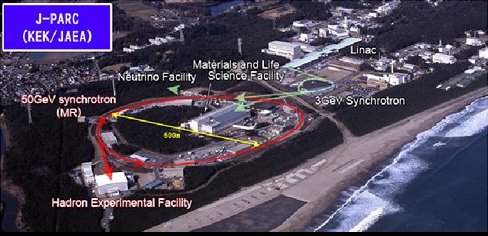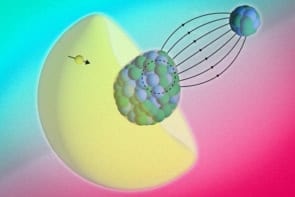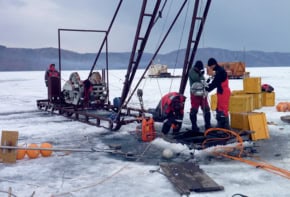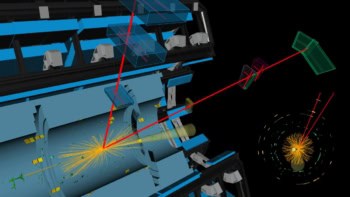
The massive $1.5bn Japan Proton Accelerator Research Complex (J-PARC) in Tokai-Mura moved a step closer to completion after researchers successfully accelerated proton beams to 30 GeV at the facility’s 50 GeV synchrotron. The protons are then sent to the Hadron Experimental Facility (HEL), where they can be smashed against a target to produce a variety of subatomic particles, including muons, neutrinos and kaons.
The HEL will have room for five experiments, the first of which will be a study of how neutral kaons decay. Other planned experiments include a study of hyper nuclei — nuclei that contain strange quarks.
In April the 50 GeV synchrotron will also send its first stream of neutrinos to the SuperKamiokande detector located in the Kamioka mine, 295 km away.
J-PARC also contains a neutron-scattering facility, which is the country’s only neutron “spallation” source and replaces the KENS facility at the KEK particle-physics lab in Tsukuba. The neutrons are produced when protons are accelerated to 3 GeV in a synchrotron and then smashed into a mercury target. They are then guided guided to J-PARC’s Materials and Life Science Facility, where researchers can carry out experiments in biology and condensed-matter physics.



